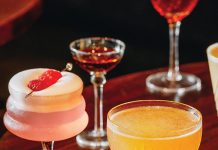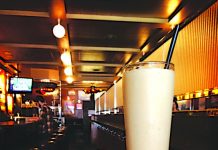Wine lore is full of tall tales about the expert who can taste wine without being told anything about it, and announce with total accuracy what the wine is, the year it was made, and on which side of the hill the grapes were grown.
I’ve been writing about wine for near 30 years. I judge several big competitions. But the closest that I’ve ever come to such precision has been to correctly name the grape type and the region where the wine was grown, which I lucked into because I already knew that wine very well.
But picking out a wine “blind,” as they say in the wine world, is really part sensory memory and a big dollop of luck.
I saw it happen once, many years ago, and it stopped the audience in its tracks.
I was judging at a competition in the Los Angeles area, and at end of the day, chief judge Dan Berger, then the Los Angeles Times wine writer, asked if I’d like to go with him to an unusual event.
An emergency room doctor and collector of old burgundies had invited Berger to come by and taste through a string of his wines, one from every decade starting in the 1920s. Very unusual invitation, to say the least.
If nothing else, Berger said, the doctor also had a 20-pound hook-caught fresh wild salmon that had been just flown in from Alaska, which was going to be grilled for guests. Old pinot noir grape and salmon? Not bad.
Picking out a wine ‘blind’ is part sensory memory and a dollop of luck. I saw it happen once; it stopped the audience in its tracks.
We made into the hills of Glendale at dusk and found the doctor’s house, a mini-palatial place built into the hillside with an unbelievable sweeping view of downtown Los Angeles.
Along one side of the property stretched a long Italianate terrace, with a terrazzo fire pit and a built-in outdoor gas range on which the doctor was busy grilling this beast of a salmon, as about 20 very tony guests ooh-ed and aah-ed and sipped wine.
It became immediately clear to us that, because we were wine judges, we were about to become the doctor’s Opéra Bouffe, his evening’s entertainment.
It was going to be up to us to guess which of the eight burgundies — each identity was now covered with brown paper bags — came from which decade, one bottle of wine each from the 1920s, ’30s, ’40s, ’50s, ’60s, ’70s, ’80s, and ’90s.
We were about to earn our supper.
Eight glasses were placed in front of us, along with eight bottles hidden by numbered brown bags.
Wines were poured and the tasting began. It wasn’t too hard to figure out some of the older wines, but we both knew the more recent vintages were going to be harder to sort out.
About halfway through tasting the wines, Berger suddenly stopped at one wine, looked up, and announced: “I know what this wine is. It’s 1953 Domaine Grivelet.”
Our shocked host pulled off the bag, and to everyone’s amazement — mine included — the label was indeed 1953 Domaine Grivelet.
The crowd applauded; the evening was ours.
I took Berger aside and asked, “How on earth did you guess that one?”
“Easy,” he said. “In the 1950s, Bernard Grivelet, the owner, was charged with fraud by French authorities for doctoring the 1953 wines with truckloads of imported grapes that came from the Rhone or Italy, Algeria or somewhere else. If you taste 1953 Grivelet today, it doesn’t taste anything like burgundy or even pinot noir grape. I tasted that wine about a year ago.”
Next time you see someone make a pronouncement on a wine, remember that it’s sometimes odd where the expertise really originated.
Hot Spot: November
BATCH BREWING COMPANY /// People aren’t surprised that the craft beer is excellent, but the well-crafted menu, with such dishes as a pork-belly pasty rillette, is an unexpected bonus at this Corktown spot, which was the Hatch Detroit winner in 2013. The premise is elementary: Order at one of the two registers at the end of the bar and take a number to put at the table. When the order is ready, it’s served by one of the staff. The simplicity befits the setting in which the fermenting tanks are the backdrop for a convivial scene at picnic-style tables. The food is fresh, beer-friendly, and creative. The nano-brewery (smaller than a micro-brewery because it brews 4-barrel batches) dishes up 12 changing varieties. Everyone, from the servers to proprietors Jason Williams and Stephen Roginson and chef Matt Johnson, is friendly and welcoming. No wonder the brewery has won a lot of fans since opening in February in the former Porter Street Station. 1400 Porter St., Detroit, 313-338-8008; L & D daily. $10 H
|
|
|









